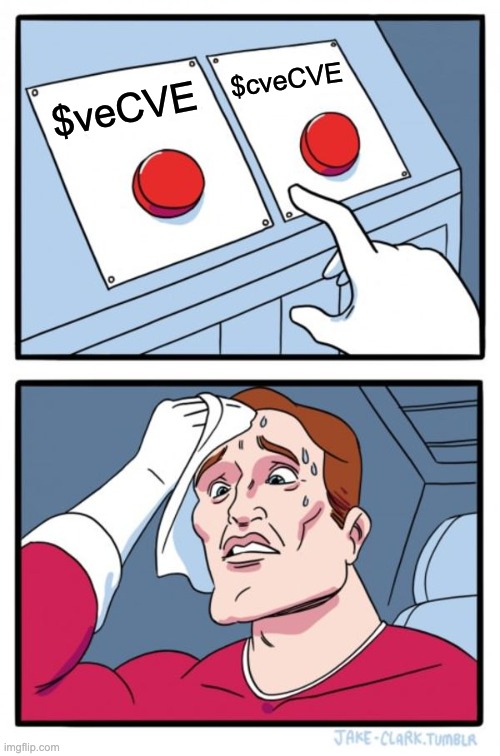
Enter @Curvance in the Curve War. Aiming to unlock the liquidity locked across protocols that participated in the war.
Allowing for higher capital efficiency and yield for your locked tokens.
Let's see what Curvance has to offer 💾🧵
Allowing for higher capital efficiency and yield for your locked tokens.
Let's see what Curvance has to offer 💾🧵

1/ @Curvance is a lending protocol that #buidl focuses on LPs from Curve, Convex, Yearn, and Frax ecosystems.
Curvance aims to enable users to continue earning yield while unlocking capital through peer-to-peer lending.
Curvance aims to enable users to continue earning yield while unlocking capital through peer-to-peer lending.
2/ @Curvance allows users to use wrapped locked tokens (i.e., cvxCRV, bveCVX, and yCRV) as collateral for borrowing stablecoin.
The APR on loans is based on various factors:
- pool APR
- price volatility
- token liquidity
- loan-to-value ratios
The APR on loans is based on various factors:
- pool APR
- price volatility
- token liquidity
- loan-to-value ratios
3/ How @Curvance works?
i.e., you deposit your $yCRV to Curvance, making the $yCRV your collateral for stablecoin loans.
Curvance will route your collateral back to the underlying protocol, making sure you still earn the yield from your collateral.
i.e., you deposit your $yCRV to Curvance, making the $yCRV your collateral for stablecoin loans.
Curvance will route your collateral back to the underlying protocol, making sure you still earn the yield from your collateral.

4/ Besides getting the underlying yield and borrowed stablecoin, you will be rewarded $CVE tokens 💸💰
$CVE can be staked to earn boosted rewards such as:
- platform fees
- fees from lending markets
- governance
$CVE can be staked to earn boosted rewards such as:
- platform fees
- fees from lending markets
- governance
5/ Tokenomics
$CVE token is NOT out yet but here's the recap
💸Ticker: CVE
💸Max supply: 420,000,069 CVE
💸Initial Circulating Supply on TGE: 40,368,588.72
You can read full tokenomics here:
docs.curvance.com/cve/cve-token/…
$CVE token is NOT out yet but here's the recap
💸Ticker: CVE
💸Max supply: 420,000,069 CVE
💸Initial Circulating Supply on TGE: 40,368,588.72
You can read full tokenomics here:
docs.curvance.com/cve/cve-token/…

6/ You can lock your $CVE token for 1 year (this is the only duration you can choose).
Your locked $CVE ($veCVE) will have 1:1 voting power per token for the entire period.
Your locked $CVE ($veCVE) will have 1:1 voting power per token for the entire period.

7/ There're 2 options for locking:
- standard 1-year lock; gain DAO vote rights and yields, while also generating $veCVE which is a non-transferable token.
- standard 1-year lock; gain DAO vote rights and yields, while also generating $veCVE which is a non-transferable token.
8/
- create liquid and wrapped token version $cveCVE
The difference:
・$cveCVE is transferable unlike $veCVE
・can be used as collateral in the lending markets
・Your voting rights will be delegated to the DAO
Rewards will be prorated to $veCVE or $cveCVE owners.
- create liquid and wrapped token version $cveCVE
The difference:
・$cveCVE is transferable unlike $veCVE
・can be used as collateral in the lending markets
・Your voting rights will be delegated to the DAO
Rewards will be prorated to $veCVE or $cveCVE owners.

9/ Bonding
@Curvance intends to raise the protocol-owned liquidity by offering to bond assets such as Convex's $cvxCRV and $CVX.
Bonding is a mechanism that enables users to sell assets to a protocol in exchange for $CVE.
@Curvance intends to raise the protocol-owned liquidity by offering to bond assets such as Convex's $cvxCRV and $CVX.
Bonding is a mechanism that enables users to sell assets to a protocol in exchange for $CVE.
10/ Bonds are offered at a discount rate, but also have a vesting term (5 days by default).
It prevents bonders from dumping all of their tokens collectively for a quick profit.
It prevents bonders from dumping all of their tokens collectively for a quick profit.
11/ Bond price is determined by supply & demand; it'll cost more when demand is high and lower when demand falls.
So, bonding is a very competitive space for bonders to get the largest discount.
So, bonding is a very competitive space for bonders to get the largest discount.
12/ @Curvance's reasons to issuing bonds because:
- guaranteed liquidity for $CVE / protocol-owned liquidity
- generating passive income streams
- voting rights for DAO
- guaranteed liquidity for $CVE / protocol-owned liquidity
- generating passive income streams
- voting rights for DAO
13/ @Curvance will share private Beta when it's available to their Guild member! Join their guild now because something cool is coming!
https://twitter.com/Curvance/status/1626307321793064962
Tagging some gigabrains just because:
@rektdiomedes
@TheDeFinvestor
@Slappjakke
@DefiIgnas
@burstingbagel
@0xTindorr
@Chinchillah_
@DeFi_Cheetah
@DeFi_educator
@alpha_pls
@ViktorDefi
@burstingbagel
@crypto_condom
@rektdiomedes
@TheDeFinvestor
@Slappjakke
@DefiIgnas
@burstingbagel
@0xTindorr
@Chinchillah_
@DeFi_Cheetah
@DeFi_educator
@alpha_pls
@ViktorDefi
@burstingbagel
@crypto_condom

Thank you for reading. this is just a primer, so follow it up with your own due diligence.
Anyway, follow me @bizyugo for more protocol threads.
Show some love by leaving a Like & Retweet the first tweet!
Anyway, follow me @bizyugo for more protocol threads.
Show some love by leaving a Like & Retweet the first tweet!
https://twitter.com/bizyugo/status/1628258307650785280
• • •
Missing some Tweet in this thread? You can try to
force a refresh


















